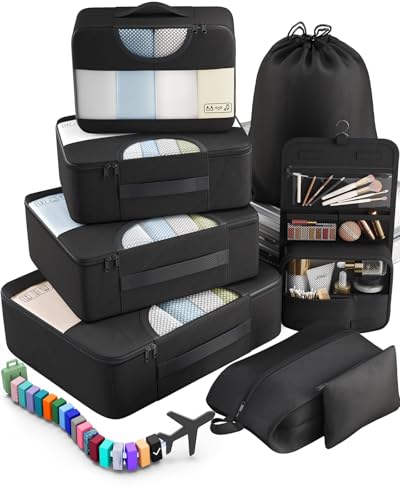In the Philippines, they use Type A, B, and C power plugs and outlets. The voltage is 220V, and the frequency is 60Hz.
So, you’ll definitely need a travel adapter in the Philippines. Not all their plugs and outlets are the same as our Type A and B back in the States.
Quick Overview of the Plugs in the Philippines:
- Plug type in the Philippines: A, B, and C
- Standard voltage: 220V
- Frequency: 60Hz
- Need a travel adapter? Yes, you do need a travel adapter
- Need a voltage converter? Might be needed depending on the device
- Recommended plug adapter: Vintar Universal Travel Adapter Kit
We cross-check our information with official guidelines from local electrical authorities, international IEC standards, and reports from travelers worldwide.
The Only Travel Adapter You’ll Need in the Philippines
Ever tried jamming your plug into a foreign outlet, hoping for a miracle? Yeah… doesn’t work. We don’t sell travel adapters, but we did the research to find the best one for the Philippines—so you don’t have to. Here’s the winner:
Recommended Travel Plug Adapter
by 1,000+ travelers on Amazon
Already out there and forgot your power adapter? You’ll most likely be fine—there are usually options around. But next time, packing your own saves you the trouble and ensures you’ve got something reliable.
Visiting the Philippines as part of a Southeast Asia trip? Many travelers also head to Indonesia, Vietnam, or Malaysia. Each country may use different plug types.
Power Outlets in the Philippines
In the Philippines, they use Type A, B, and C power plugs and outlets.
Type A

Type A outlets have two flat prongs and no grounding pin.
Type B

Type B outlets have two flat prongs and a grounding pin. Type A plugs will also fit.
Type C

Type C outlets have two round prongs and no grounding pin. Type E and F plugs usually fit too, but grounded plugs will need an adapter.
Do You Need a Voltage Converter?
A voltage converter is likely needed in the Philippines because your device must match the country’s voltage. The U.S. runs on 120V, but the Philippines uses a different voltage, so a converter is necessary.
Always double-check the label on your device before using it abroad. If it shows “100-240V, 50/60 Hz”, your device is dual voltage and works on both 120V and 220-240V power sources without a converter. This is common for laptops, tablets, smartphones, cameras, and electric toothbrushes.

Which Travel Devices May Need a Converter?
Don’t want to guess which converter works? Here are the best-reviewed ones worth checking out.
| Device | Need Converter? | Notes |
|---|---|---|
| Phone | ❌ No (usually) | Most modern phone chargers are dual voltage (100–240V) |
| Laptop | ❌ No (usually) | Check the power brick label for 100–240V |
| Hairdryer | ✅ Yes (often) | High wattage; many models are not dual voltage |
| Electric toothbrush | ⚠️ Check voltage | Some models are 110V only |
| Camera / DSLR | ❌ No (usually) | Most chargers are dual voltage |
| Power bank | ❌ No | Charges via USB, adapter is enough |
| Electric shaver / trimmer | ⚠️ Check voltage | Older or cheaper models may not support 230V |
| Tablet / iPad | ❌ No | All models are dual voltage |
| Portable fan | ✅ Yes (sometimes) | Many models are not compatible with 230V |
| Game console | ⚠️ Check voltage | Newer consoles like PS5 and Xbox are often dual voltage — check to be sure |
| Bluetooth speaker | ❌ No (usually) | Charges via USB |
| E-reader (Kindle, etc.) | ❌ No | USB charging only, no converter needed |
Top Travel Essentials to Pack
Packing smart means thinking ahead. These extras don’t take much space, but they can make your trip a lot more comfortable.
Digital Luggage Scale
Packing Cubes
Power Bank
More About the Philippines
The Philippines has over 7,600 islands—but each one feels like its own universe. You’ll find postcard beaches and surf capitals, colonial history and cultural mashups, jungle adventures and coffee highlands.
The food scene? Absolutely mind-blowing—it goes way beyond adobo and lechon. Ginataang langka, kinilaw, halo-halo… it’s comfort food and cravings all wrapped in one. The local warmth, fiesta culture, and scenic variety will stick with you long after boarding that plane.
Top places to visit in the Philippines: Manila, Cebu City, Boracay, Palawan, Davao City, Bohol, El Nido, Vigan, Siargao, and Tagaytay.




